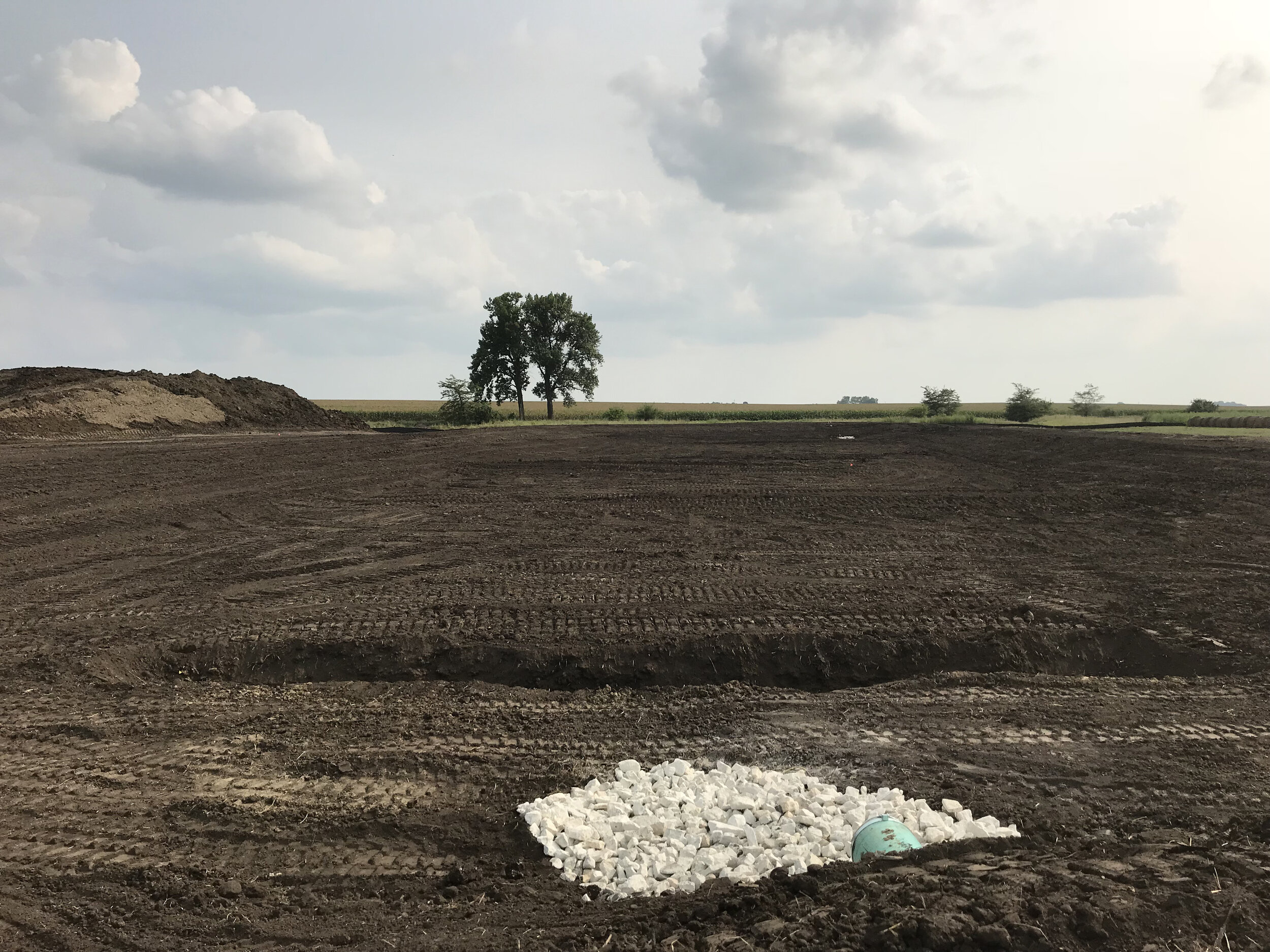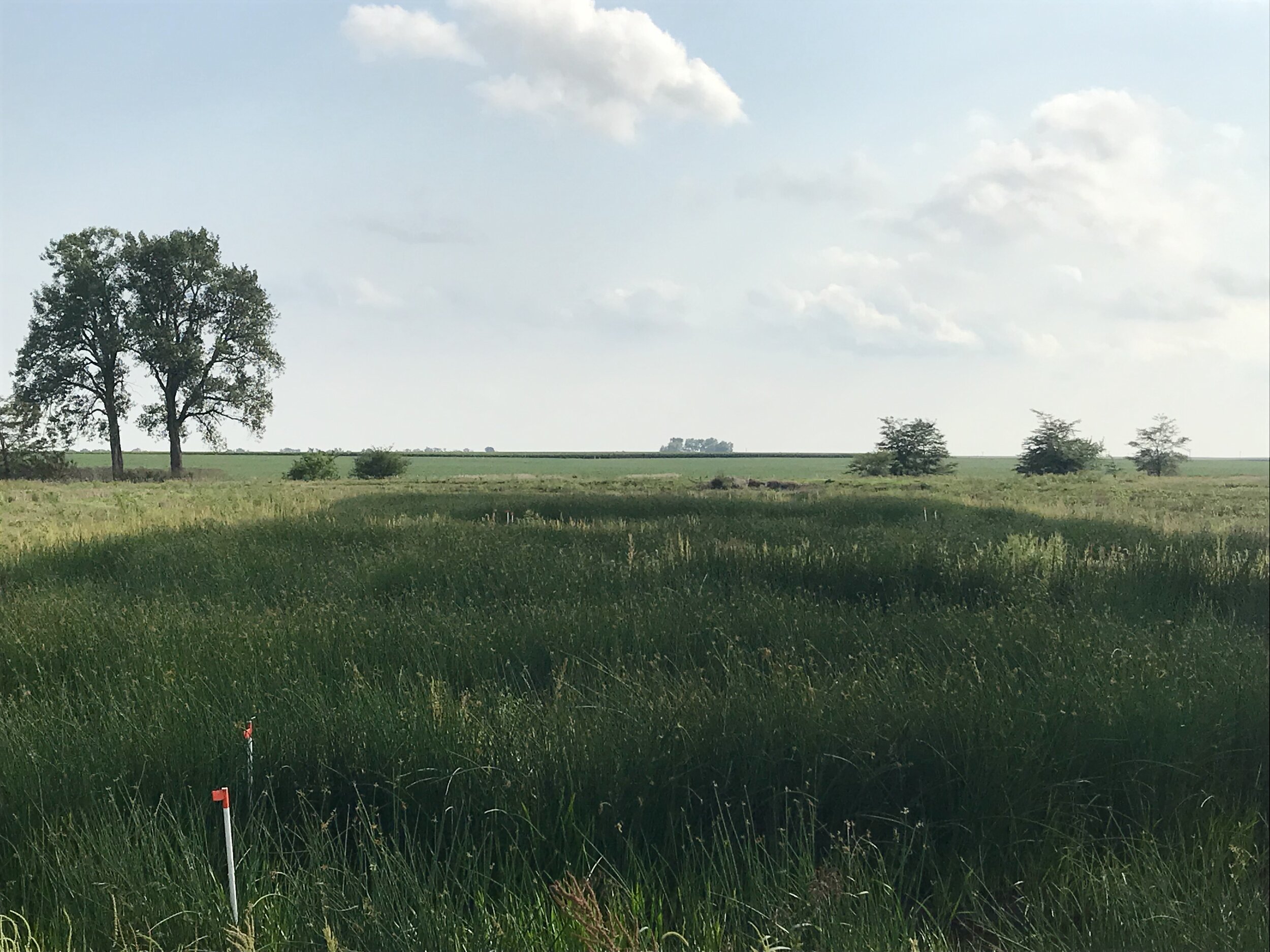growing wetlands for clean water case study: fulton farms
The Wetlands Initiative is partnering with farmers throughout north-central Illinois on constructed wetlands to reduce nutrients in agricultural runoff. Fulton Farms was one of the enthusiastic adopters of this conservation practice to improve water quality. Each constructed wetland is designed and sited specifically for the farm fields it is treating and this case study of Fulton Farms highlights some of the features landowners consider with TWI.
Jim Fulton and his family next to their just-built wetland in August 2018. Photo courtesy of Daniel Fulton.
Size and type of farm operation: Fulton Farms is a family operation co-owned by three siblings and managed by one of the brothers, Jim Fulton. The family owns and operates 690 acres for corn, soybean, and hay production.
Wetland site location: Livingston County, Illinois.
Date wetland built: August 2018.
Farm Bill financial assistance program used: Environmental Quality Incentives Program (EQIP).
Wetland details:
Wetland treatment area - 1.1 acres
Buffer area - 2.45 acres of pollinator habitat
Total project size - 4.81 acres
Engineering design for the Fulton Farms wetland.
Special features of the wetland: The wetland receives tile drainage water from 73 acres of cropland. The ratio of contributing drainage area to wetland treatment area is 1.5%, indicating that a relatively small area of cropland is out of production for the wetland but enough to ensure adequate treatment. An inlet water control structure acts as an on/off switch to allow water to flow into the wetland or to bypass it and drain into the adjacent stream. The site was a former wetland so the hydric soils were stockpiled during construction and used as the growth media for the wetland plants that were introduced after.
Why Fulton Farms installed a wetland: According to Jim Fulton, co-owner and operating manager, “You cannot be a good steward of the farmland if you do not preserve and conserve the land so it is better for the next generation of farmers.”
Specifically regarding agricultural runoff he said, “There’s been a lot of talk in our area and the state about the problem of nitrogen leaving cropland and causing problems with water quality. So, I decided to stop talking and do something about it! When I learned that a constructed wetland would work on my farm, I agreed to install one. And I got the side benefit of having an area that supports wildlife and pollinator habitat. We enjoy visiting the wetland to see the wildlife and native plants.”
Additionally, “The other thing I really like about this program is that it provides an opportunity to pull out a few acres that are not productive and install a wetland. It makes the rest of the operation more productive and helps clean our tile water before it leaves our farm.”
How the wetland is working so far: By August 2019, a year after construction, the wetland plants necessary for treatment had grown in well (see the photos below for the wetland pre-planting in 2018 and a year later). TWI will begin water-quality monitoring of the wetland’s nutrient-removal performance in summer 2020, in partnership with researchers at the University of Illinois at Chicago and the University of Illinois at Urbana-Champaign.
Jim Fulton also appreciates the other conservation benefits of the wetland: “I am hoping that by planting native plants in the buffer around our wetland, pheasants, monarchs, and other wildlife will find a home on our farm again.”



